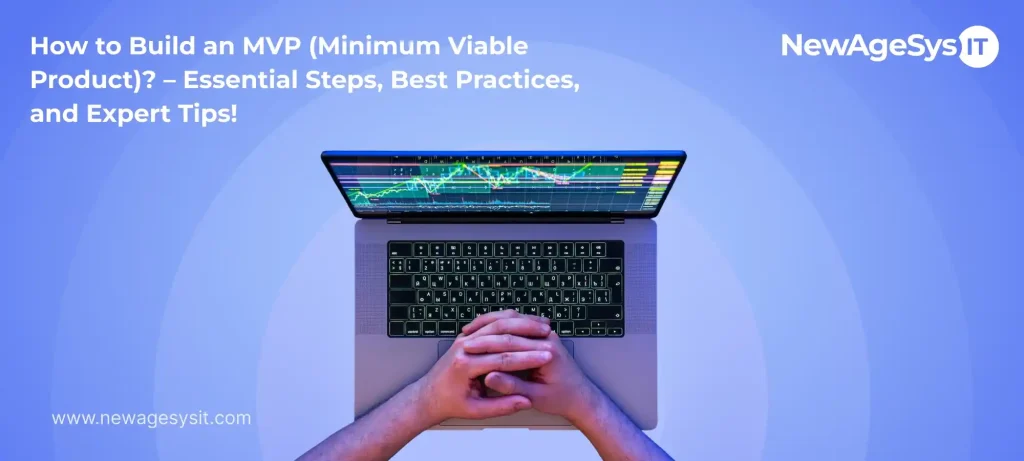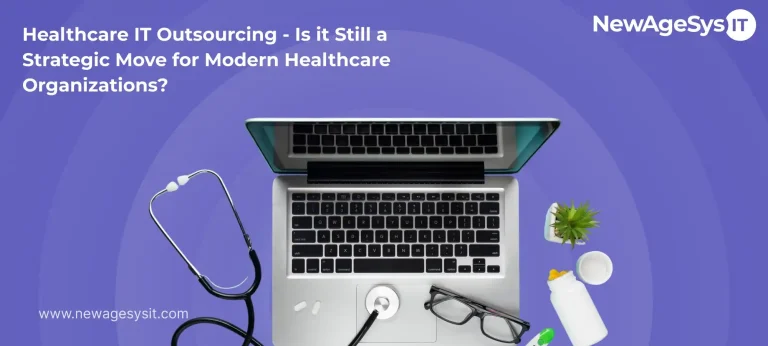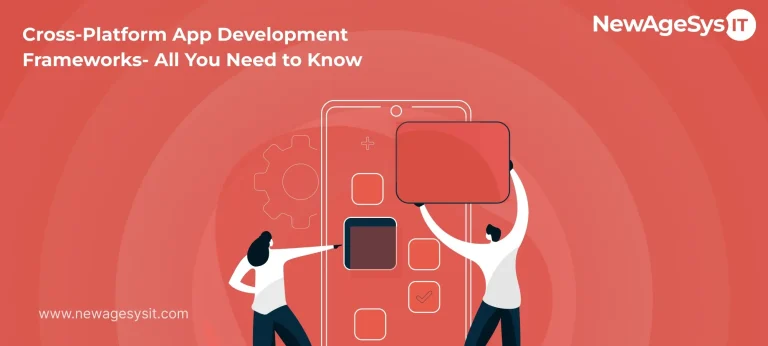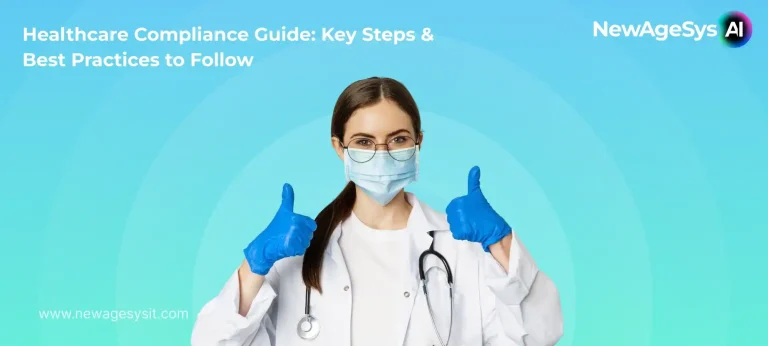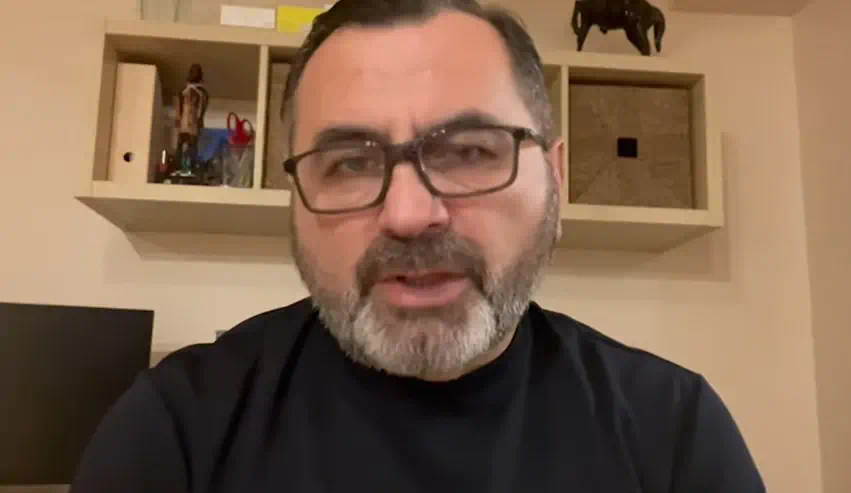| Key Takeaways: MVP = Core value, so only focus on solving one key problem with essential features that support it. Validate before building your idea by talking to real users, identifying pain points, and ensuring that your product is a “painkiller” and not a “vitamin.” Prioritize features using frameworks like MoSCoW + Kano to avoid overbuilding. Build fast and scalable using a lean tech stack, quick iterations, feedback loops, etc. Avoid pitfalls like skipping feedback, unclear KPIs, misaligned teams, etc. |
A product idea used to be an idea, back in the day. However, today, you need to have a concrete answer for the question “How to build an MVP?” Why? Because in 2024, the estimated global software market was $730.30 billion, while the mobile apps market is projected to generate a revenue of $613 billion in 2025. With this much investment, competition rises, and investors need more than just an idea to bet their money, i.e., a proof-of-concept that demonstrates real-world applicability and potential for adoption.
MVP, or a minimum viable product, caters to that proof-of-concept demonstration. It allows you to share core features of your idea with the world, and get you feedback that is real + helps with funding and further scaling of the product. So, from a market tractability perspective, MVP development is essential. However, the story is much nuanced, as of today. And, to develop an MVP that delivers true advantage, it is important to set your expectations right.
This is the reason we were compelled to write this article, sharing our experience of over 25 years to help you build something incredible.

What is MVP (Minimum Viable Product)? – and, What is it not?
The term MVP was originally coined by Eric Ries, the author of The Lean Startup. He defined it as:
“A Minimum Viable Product is that version of a new product which allows a team to collect the maximum amount of validated learning about customers with the least effort.”
In much simpler terms, it is the most basic version of your app or software that demonstrates the core of your idea, and can be readily used by your target audience to help you gather feedback.
However, before building an MVP, it is also important to understand what it’s not.
In the intro, we talked about MVP as the proof-of-concept. However, we used it in a literary sense to explain what an MVP is, but in reality, if we go by the word “Proof-of-Concept,” it is a concept of IT development. Lifewise, there are two more phrases ‘Prototype” and “Beta Version,” that are often confused for MVP. So here are their core differences, in comparison with an MVP:
| Term | Goal | Users | Functionality | Stage |
|---|---|---|---|---|
| 📐Prototype | Show design & flow | Internal/Stakeholders | Low or none (mocked) | Idea shaping |
| 🔬PoC (Proof-of-Concept) | Prove tech feasibility | Internal/Investors | Limited, focused | Tech validation |
| 🚀MVP | Validate with real users | Early adopters | Core features are usable | Market testing |
| 🧪Beta Version | Test before full launch | Select/test users | Nearly complete | Pre-launch |
Types of MVP – How are they defined, business stage, and estimated cost of development by NewAgeSys?
Throughout our term of providing MVP development services, we have developed a plethora of MVP ideas. Consequently, this has enabled us to cover each type throughout the span of time we’ve existed. So, here is a table explaining each type along with the promised details, including NewAgeSys development prices @ $25-$49 per hour.
| Stage | Definition | Business Stage | Estimated Cost |
|---|---|---|---|
| Prototype | Visual design mock-up | Idea stage | $1k – $5k |
| PoC | Proves technical feasibility | Concept stage | $3k – $10k |
| MVP | Core features for market testing | Early market stage | $10k – $50k |
| Beta | Near-final product for pre-launch | Growth stage | $15k – $80k |
Before You Build – Validating the Minimum Viable Product Idea Before Realization!
Building an MVP and validating the idea are two completely different aspects that can be carried out independently. However, validating the idea before you take your idea to MVP investors assures investments and market success (depending upon the impact of the solution).
In fact, there was a time when, without validating your idea, your app might taste a bit of success. But this was at the very beginning, where curious adopters would try anything simply for the sake of it. However, with the rising markets, multiple apps for a single problem, and the overall flooding of apps in the market, the stickiness of the product depends on the USP it delivers, and whether that product solves a real mass problem. Basically, the innate curiosity to try anything innovative in the app world is dead today.
So, before even writing a single line of code or getting it written, it is important to talk with real users. Ensure that you keep the conversation casual and conversation-driven. Focus on the problem and not on providing a solution through an idea. And, stay open-ended. A few sample questions that will help you uncover the frustrations and priorities of customers are:
- What are the biggest challenges you face when [state the problem]?
- How do you currently solve this problem?
- If you can solve the problem, what would the solution be?
The questions above are simply to give you perspective. You can forge your own, and even use these if they suit you.
Painkiller vs. Vitamin
Another way you can think of validating the idea before MVP building or MVP fundraising is, “Will my customers feel real pain or a mild inconvenience if my product vanished tomorrow?” A great way to assess this is by using the framework of “Painkiller vs. Vitamin.” It is a common framework used in MVP project management.
The framework says that your product should ideally be the painkiller. It means that it should resolve a problem that is pressing, urgent, and has a measurable pain point. This should be as opposed to a vitamin, which is just “nice to have.”
A better way to understand this would be:
- Painkiller MVP: Something which users actively seek out and pay for. For instance, an accounting software that cuts invoice creation time in half.
- Vitamin MVP: Something which users like but can live without. For example, a gamified step counter.
Going a step beyond, you can also utilize the “Lean Canvas Template” for your minimum viable product. It is a framework created by Ash Maurya in 2010, which is adapted from Alexander Osterwalder’s Business Model Canvas. The aim behind the creation of this framework was to find a problem-solution fit and get rapid validation. Below is the table that describes it, divided into two columns that share a section and its description:
| Section | Description |
|---|---|
| Problem | Top 1-3 problems your target users face. |
| Customer Segments | Specific groups of people or businesses you aim to serve. |
| Unique Value Proposition | A clear statement of why your product is different and worth buying. |
| Solution | Proposed features or approaches to solve the problem. |
| Channels | How you’ll reach and communicate with customers. |
| Revenue Streams | How the product will make money. |
| Cost Structure | Key costs to build and operate the product. |
| Key Metrics | Critical numbers to track success. |
| Unfair Advantage | What you have that can’t easily be copied or bought. |
Core Components of a Minimum Viable Product (MVP)
An MVP, in hindsight, feels like a light version of your app. However, the core purpose of it, as discussed, is to validate your idea and get MVP seed funding.
For this to become a reality, you need to integrate core components that strengthen your MVP development. So, here are those key components:
1. A Clearly Defined Target User Persona
Before development, it is important to understand who will use your MVP solution. The focus of your MVP software development should be based on its target audience. A clear example of this would be an MVP created for GenZ adopters and another MVP that caters to Boomers.
This distinction will help you establish the design style, user experience, content used, and many other things. And, the best way to achieve this is by having a clear and well-defined target user persona at your disposal.
2. One Core Problem to Solve
Before Uber became the service we know today, it was a simple MVP. And, it catered to a basic idea of connecting users with cab drivers. All the modern features we access on the application presently are waves of new integrations done over time.
So, instead of trying to solve an entire stack of problems, try solving one core issue. A strong minimum viable product ideally focuses on a single and high-priority pain point so that users immediately identify its value.
3. Essential Features Only
Initially, avoid multiple MVP features. At the MVP stage, it is important to primarily focus on features that support the USP of your idea. Beyond that, cut out any “nice-to-have” features; they’ll accrue more cost and might not serve a real purpose in the future.
4. Usable, Functional Design
Designs evolve over time. All the popular applications that are used by millions and billions of people across the world don’t look the way they looked when they originally launched.
However, what you should keep in mind is that the design should be intuitive and easily navigable based on your target audience. It should possess that natural flow across pages even at the MVP stage.
5. Built-In Feedback Loop
One of the core purposes of building an MVP is to learn about the pitfalls and needs of your audience. And, to actively collect feedback for the same, you need to capture user insights. So, integrate analytics dashboards, surveys, feedback forms, or conduct interviews to gather insights for the future development process.
6. Basic Scalability
After getting an MVP investment, most entrepreneurs think about scaling it. This could be from the perspective of gathering new users from a new region, affinity to integrate features that cater to a large target market, or expansion in terms of product offering & accommodation (e-commerce, video-on-demand, etc.).
So, ask your MVP development company to create a build that can scale in the future.
A great way to do that is by creating a lean build and choosing a tech stack that allows for expansion. Also, go for a modular approach.
7. Predefined Success Metrics (KPIs)
Measuring the success of your efforts is fruitful from day one. To measure the success of your MVP solution, you can use common metrics like:
- Activation Rate – Percentage of users completing a key action.
- Retention Rate – Users returning after a set period.
- Conversion Rate – Free-to-paid upgrade rate or sign-ups.
Pro Tip: The best MVPs are usable, valuable, testable, and improvable — not just functional, but capable of delivering actionable business insights.
How to Build an MVP? – Step-by-Step Development Framework
Building an MVP follows more or less the same blueprint of steps that comprises several tasks, for most industries, like Healthcare, Transportation, On-Demand Services, SaaS, E-commerce, etc. However, these tasks internally differ in most cases as the industry and the complexity of the idea shift.
Since it is impossible for anyone to provide steps that cater to each industry and each idea individually, we have mentioned generic steps for MVP building. It will give you a hands-on idea of what the MVP app development process looks like, and will guide you when you finally develop your idea.
1. Define Core Problem
For MVP fundraising, today, it is important to go beyond just having an idea. Basically, you should focus on validating your idea in terms of real-world implementation and adoption. Before pitching your idea to MVP investors, make sure your idea solves a pain point, as per the present context.
To effectively do it, you can make use of AI-assisted market research. This will help you quickly scan forums, social chatters, and even competitor reviews for anything fruitful. Also, be on top of things in terms of understanding emerging user expectations. In today’s context, this could mean better speed, more personalization, higher security, and sustainability of the product.
2. Identify Success Metrics (Outcome-Driven)
Establishing success metrics and achieving them ensures continual MVP investment and sometimes initial investment too. In fact, to assess and improve the capability of your MVP in the long term, you require metrics. These metrics provide measurable feedback on your MVP’s capability.
Common metrics include signups, early activation, engagement loops, onboarding completion %, etc.
To lay out the metrics matrix, divide your metrics into two categories, i.e., leading indicators and lagging indicators. Leading indicators provide insights within 24 hrs. While lagging indicators require monthly retention.
3. Prioritize Features (MoSCoW + Kano Hybrid)
While developing MVP apps, a lot of entrepreneurs stray into adding tons of features to the first build. However, at the MVP stage, we are only assessing the core of the idea. In fact, previously in the component’s section, we did talk about cutting out “nice-to-have” features at the MVP stage. This step deals with it, and there are several prioritization frameworks like MoSCoW and Kano Hybrid that can be used to realize core features. So, let’s explore:
MoSCoW Framework:
Takes the internal integration importance of the features into consideration, dividing them into four facets:
- Must-Have: Single features that directly solve the problem and work flawlessly for your idea.
- Should-Have: Enhancements for your MVP, such as AI-enabled suggestions, privacy-first controls, etc.
- Could-Have: Delight features that may trigger virality but aren’t critical.
- Won’t-Have (for now): These are “Nice-to-haves” but drain early build speed.
Kano Model:
Feels similar to the MosCoW framework but focuses on customer satisfaction and comprises five facets:
- Basic: Expected features. Missing them causes customer dissatisfaction.
- Performance: Betters the delivery of MVP services, leading to happy customers.
- Delighters: Unexpected features that make the users like the product.
- Indifferent: No real impact.
- Reverse: Some like, others may dislike.
There are plenty of other prioritization frameworks like RICE, ICE, Value vs. Effort Matrix, Opportunity Scoring, etc., that can be utilized. In fact, they can even be used in coalition to balance functional aspects + customer delight.
4. Design & Prototype (Hyper-Visual & Testable)
It could be evolutionary, but most humans are visual creatures. So, an incredible UI/UX has a direct impact on your MVP in business, and in terms of gathering MVP seed funding.
Gladly, we have AI-powered design tools like Galileo, Uizard, etc., that can help you build clickable prototypes in hours. You can also use Figma (a popular design/prototyping tool) with AI plugins to achieve the same.
To improve, make the MVP mobile-first, and focus on micro-interactions. You can also integrate a feedback capture layer in the prototype for using in-app survey tools (Typeform, UserTesting, etc.) and heatmaps (Hotjar, Crazy Egg, etc.) for data-driven visual enhancements.
5. Build — Fast but Stable
For initial MVP building, keep a window of 2-6 weeks. And, for a faster build, you can utilize a lean tech stack that comprises low-code/no-code for non-core systems + custom coding for “magic” features. Tools like AI Copilot can add dev speed, but human review is necessary.
Last but not least, ensure compliance from day one, depending upon your industry (for example, HIPAA for Healthcare) and regions of operations.
6. Test + Iterate (Tight Loops)
The final step on “How to build an MVP?” and the most important one, too.
Bugs and other issues trample user experience, negatively impacting the application. Effective testing promises deliverance with no hindrance in experience and tackles negative PR or word-of-mouth.
Launch an MVP that is close to beta for real users and run A/B experiments to assimilate user taste. AI analytics can deliver you drop-off points, sentiment in feedback, and possible feature gaps. And, weekly sprints can be run to bridge the gaps and realize success benchmarks faster.
Possible Add-Ons to Include – Based on Present Context:
- AI-readiness: Users expect some level of intelligent assistance.
- Personalization: The product should feel “mine” from day one.
- Privacy-first design: Clear, simple consent flows.
- Integration-friendly: API-ready so it can plug into ecosystems.
- Sustainability angle: If relevant, highlight efficiency, low carbon use, or ethical sourcing.
Pitfalls to Avoid (Real Advice from 25+ Years in Dev)
Throughout our experience of 25+ years, we have seen numerous entrepreneurs make these mistakes. So based on those mistakes, here are some advice that can help you avoid possible damages at the MVP stage:
- Don’t overbuild before validating the core idea
- Skipping or ignoring user feedback loops and analytics is product suicide
- Avoid misalignment between business goals and technical teams
- Choose a tech stack based on current trends rather than scalability and maintainability
- Clearly define the core problem or target audience as detailed and as early on as possible
- Focus on primary persona, don’t try to please everybody
- Avoid late launches because of perfectionism or fear of failure
- Don’t underestimate user onboarding and experience
- Have clear success metrics or KPIs to measure progress
- Keep it simple and focused
- Plan iterative improvements after launch
Beyond MVP Building – What’s Next?
Once you are done developing your minimum viable product, it is now time to take the next steps. Below, we have mentioned a couple of them, in no particular order:
- Prioritize and develop high-impact features based on data
- Continuously optimize user onboarding and experience for better retention, till it reaches perfection
- Scale your infrastructure to support a growing user base
- Implement robust analytics and monitoring systems, and involve a new metric system if required
- Refine your marketing and growth strategies based on MVP learnings
- Build partnerships and integrations to expand the ecosystem
- Plan ongoing product iterations and updates
- Secure funding or resources for the full product development phase
Conclusion: Building MVPs with Legacy-Grade Engineering
Developing an MVP is as business-critical as developing a full-fledged app. In fact, some would argue it’s much more important. Why? Well, it provides that desired pre-validation from the market, investment from investors, and helps avoid spending money on an idea that might fail in the market. However, effective development of your MVP idea is much more crucial. Otherwise, an idea that may have potentially worked in the market might end up failing. For example:
- Sony failed with their digital music player idea in the market, but Apple had numerous successes with the iPod.
- Friendster failed at creating a successful social networking platform, but Facebook created the most popular one.
- Webvan didn’t succeed at creating an online grocery delivery service, but Instacart flourished.
And, the success boils down to two factors, i.e., a clear understanding surrounding MVP development and its nuances + a capable MVP development team. For the earlier requirement, we created this detailed “How to Build an MVP?” article. However, for the latter, you can connect with our team and get the benefit of our extensive experience and affordable pricing despite us being a U.S.-based company.
On an end note, we’d like to say, whoever you partner with, your MVP planning and involvement will aid the effective realization of the idea tenfold, and nothing else.
FAQs:
Q.1 What is an MVP for business?
A minimum viable product for any business is an application with the bare minimum features that represent its core idea. For a business, it can help with gathering investments, assessing market demands, and getting feedback before full development takes place.
Q.2 What is the importance of MVP in startups?
Here are a few factors that share the importance of MVP apps for startups:
- Product idea validation from real users
- Time and development cost saving
- Reduces risk of failure
- Investor attraction through early traction
- Guides future product development
Q.3 Who can help with MVP development for a startup?
Anyone who is in the business of developing apps and software, or any capable in-house team with relevant skills, can build MVP apps for startups.
Q.4 What is MVP funding?
Any funding is delivered to develop a minimum viable product to gather feedback and market demand.
Q.5 Do you need an MVP to get funding?
Not always. However, considering the present influx of applications in the market and overall competition, having an MVP for your idea increases your chances of acquiring funding from investors.
Q.6 What are some routes to get pre-MVP funding?
Here are common routes to get pre-MVP funding:
- Bootstrapping: Using personal savings or revenue from side projects
- Friends & Family: Raising small amounts using personal networks
- Angel Investors: Early-stage investors who are willing to back promising ideas
- Startup Grants: Government or private programs that offer non-repayable funds
- Accelerators & Incubators: Programs that provide seed money, mentorship, and resources
- Crowdfunding: Raising small contributions from a large number of people through platforms like Kickstarter or Indiegogo
- Pre-sales: Selling your product/service in advance to fund development
Q.7 How do you pitch MVP to investors?
To pitch your MVP to an investor, follow these steps:
- Define the problem statement clearly
- Present your MVP as the solution
- Share the traction report and user feedback acquired
- Highlight the market size and growth potential of the product
- Explain your business model
- State the needs for funding and its usage plan
Q.8 What makes a good MVP?
Here are a few attributes of a good MVP:
- Solves a core problem
- It should be simple and easy to use
- Should provide immediate value
- Validates your assumptions faster
- Is scalable for future features
Q.9 What is an MVP Prototype?
An MVP prototype is nothing but a testable, basic version of your product idea. It is developed to demonstrate and validate your idea before full development.
Q.10 What is MVP in product development?
In product development, MVP means the same, i.e., a basic version of your product idea that satisfies early users and gathers feedback.
Q.11 How long does it take to build an MVP?
Depending upon the complexity, resources required, and the scope of an MVP app, it can take from 1 to 6 months for development.
Q.12 What are the advantages of building an MVP website?
Here are a few advantages you can reap by building a website MVP:
- Lower development cost
- Faster time to market
- Early user feedback
- Reduced risk of failure
- Easier investor attraction
- Flexibility to pivot or improve

